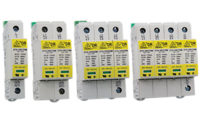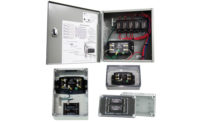Businesses of all kinds depend on sensitive electronic systems to protect the safety and security of their customers, visitors, and staff. They depend on a variety of security systems including access control, video surveillance, identity and visitor management, and many more. It’s a proven fact that all these electronic systems last longer and are more reliable when they are protected against the damaging effects of power surges and spikes. Given that fact, why do only a tiny fraction of new installations — often less than 5 percent — incorporate this important protection?
This is particularly unfortunate because when surge protection is left out, both sides lose — the integrator loses short-term sales and long-term reputation, while the customers lose equipment reliability and trust in their security installers.
Security integrators are in the best possible position to help their customers get the most life and reliability out of their equipment. Integrators with an eye for long term success can make the most of this opportunity by battling the small number of unconvincing reasons for skipping surge protection. Here are some recommendations for capturing this value:
- Learn surge protection basics. If you think that lightning is the only source of electrical surges, you may be surprised to learn that surges are much more common than you realize, and often created right within the customer’s building by common equipment. Take advantage of the plentiful guidance on the topic — it is as close as your internet connection. Invest a little bit of time and it will pay dividends for years.
- Put yourself in your customers’ shoes. Your best customers hire you not only to get today’s job done, but also for your technology expertise and experience. They place their trust in you to do the job the way it should be done. They count on you to tell them if they are making a mistake, and how to get the most from their investment. They may not know about the dangers of electrical surges, but you do. Educating them of these risks shows your commitment to their success, and puts you on a path to a long term relationship.
- Manage the cost issue. Surge protection is insurance that saves money. When equipment goes down, the cost of replacement equipment is only the beginning: the downtime and loss of customer confidence can result in larger and longer financial losses. In contrast, the cost of surge protection is usually less than the sales tax that was paid on the system. Make sure the customer understands this breakout, so that the overall cost can be compared accurately if needed. Winning the deal without protection is great in the short run, but the customer could well sour in the future when the system is not as reliable as expected.
- Think long term. By consulting with customers on surge protection, and helping them understand its value, security integrators set the stage for a longer, trust-based relationship that can increase both short-term and longer-term revenues. In addition, surge protection can support a stronger and more effective maintenance contract that strengthens the relationship even further. The short-term savings associated with skipping surge protection pale in comparison to the value of the longer equipment life and improved reliability.
Power surges and spikes are a silent killer of electronic systems and can lead to costly equipment failure and downtime. Implementing surge protection solutions, such as PoE network or fire alarm control panel protectors provided by DITEK, can help protect sensitive electronic equipment from power surges caused by any source and result in both longer equipment life and higher system reliability. Including surge protection is a relatively small cost item that will position you as a valued partner and strengthen ongoing maintenance contracts. — by Michael Molinari General Sales Manager DITEK Corporation









